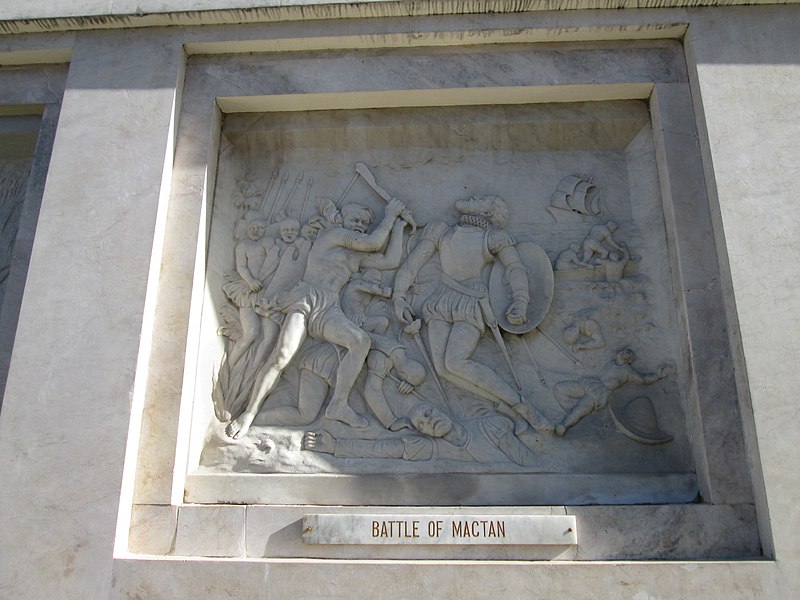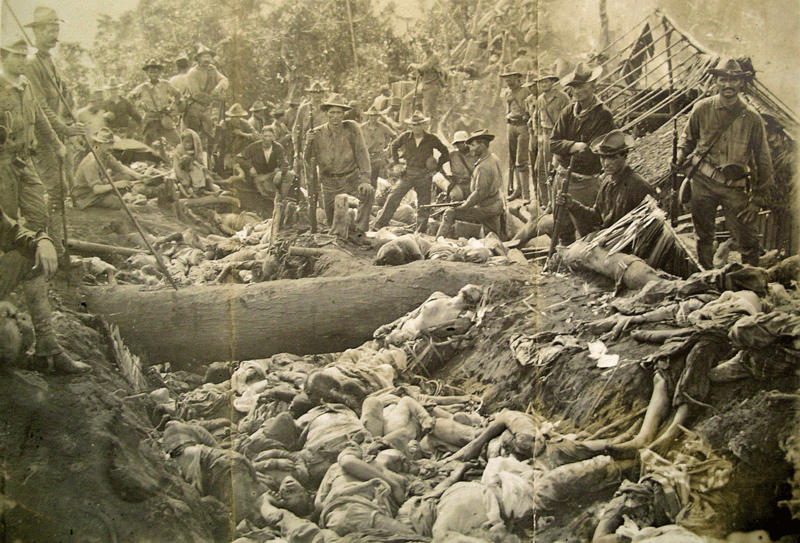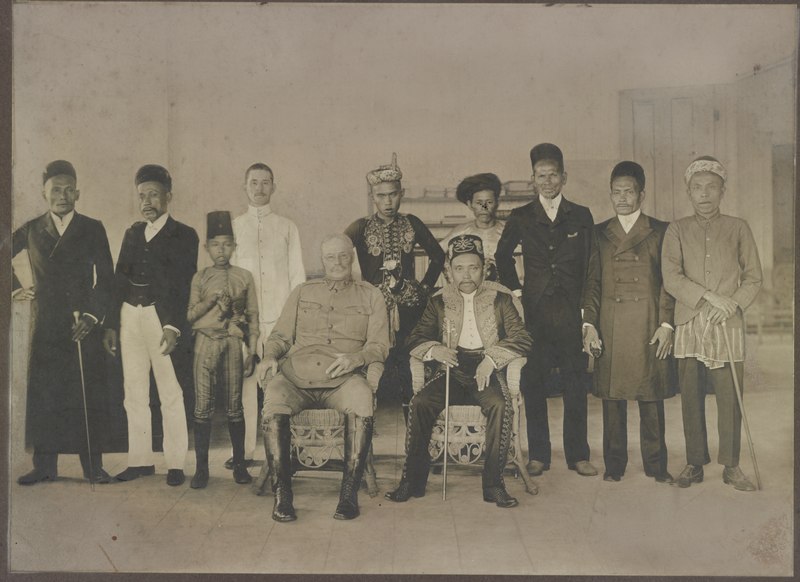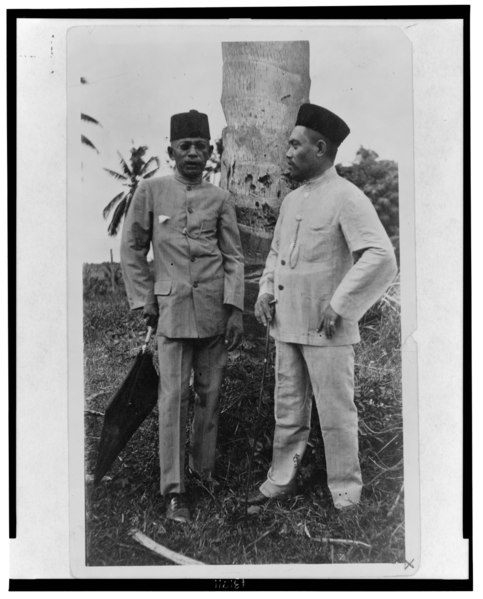The Moro Rebellion was one of the most significant and prolonged conflicts in Philippine history. It was an armed conflict between the Moro people and the United States military during the Philippine-American War. It lasted several decades and was characterized by intense violence and resistance. It was among the important events that shaped the socio-political landscape of the southern region of Mindanao and left a lasting impact on the Moro people. In order for us to further understand the complexities of the rebellion along with its underlying causes, it is vital to explore its historical background.
In this article, we are going to provide you with a comprehensive overview of the historical context surrounding the Moro Rebellion to shed light on the various factors that contributed to its emergence and development. We will discuss the key factors that led to the Moro Rebellion, including cultural and religious divisions, land disputes, and the marginalization of the Moro population. In addition to that, we will also provide you an overview of the different phases of the rebellion.
Who were the Moro People?
The Moro people are the native Muslim people of the Philippines. They are the descendants of the early Malay, Arab, and Indian migrants into the Philippine archipelago from as early as the 14th century.
The term “Moro” was given by the Spanish investigators who named the Muslims in the Philippines as such due to their geographical location of living on the moors. But this title usually excludes Filipinos who have converted to Islam.
Due to the differences in culture and religion, the Moro people fought for their independence for many centuries. They resisted the Filipino armies and later the Spanish armies when the Philippines was colonized by Spain. After Spain was defeated, American forces began to exert their control in the Moro regions, and the Moro people resisted again and fought back. This came to be known as the Moro Rebellion. Read on to learn more about how it began.
Moro People in the Pre-Colonial Era
The pre-colonial era of the Moro people in the southern region of the Philippines laid the foundation for their unique culture, societal structures, and political systems. It is also important to understand this era to further comprehend the Moro Rebellion.
During the pre-colonial era, the Moro people developed a rich and diverse culture that revolved around Islam, their ethnic identities, and their trading networks. The Moro Sultanates, such as Sulu and Maguindanao, played a central role in governance. The Sultan served as the ultimate authority when it comes to religion and politics. The Sultanates showed hierarchical social structures and nurtured a sense of unity and identity among the Moro population.
The interactions of the Moro people were not limited to their immediate surroundings but extended to neighboring powers in Southeast Asia and beyond. They were involved in trade, diplomatic exchanges, and cultural dissemination with India, China, and other regional kingdoms. The Moro people have expertise in maritime navigation, which allowed them to establish extensive networks and exert influence in coastal areas.
But conflicts can’t be avoided, and the Moro people faced sporadic tensions and associations with neighboring indigenous groups. These interactions are what shaped their territorial boundaries and trade routes. Sometimes, it also led to disputes over resources and political control.
Spanish Colonization
A new era for the Moro people started when the Spanish arrived in the Philippines. The first encounters between the Spanish and the Moros happened during the expedition of Ferdinand Magellan in 1521, which led to subsequent efforts by the Spanish to establish control and spread Christianity. But the Moros resisted these attempts, which led to early conflicts and acts of defiance against Spanish colonization.
The Spanish created forts and garrisons in strategic locations within Moro territories to assert their dominance. They also implemented the encomienda system, which involved the granting of land and labor from the Moros to Spanish colonizers. Aside from that, Jesuit and Franciscan missions were sent to convert the Moros to Christianity. These challenged the traditional religious practices and cultural identity of the Moro population.
Since the Moro people were highly skilled in seafaring, they engaged in raids and piracy against Spanish colonies. These acts of resistance meant to defend their autonomy, resources, and culture. Some of the notable instances of resistance include the Battle of Mactan that occurred on April 27, 1521, where Lapu-Lapu and his warriors defeated Magellan. There were also other instances of Moro uprisings and confrontations with Spanish forces.
The Spanish colonization of the Philippines marked a momentous turning point in the history of the Moro people. The events that occurred in this era started a pattern of resistance, conflicts, and changes in socio-political structures that would continue to shape the Moro rebellion.
American Colonial Period
When the Americans arrived in the Philippines in 1898, colonial power was transferred from Spain to the United States after the Spanish-American War. When the Americans came across the Moro people, they attempted to establish control and conform them to their colonial project. However, these attempts were resisted by the Moros, which led to early conflicts and acts of disobedience against American colonization.
The Philippine-American War was declared over by President Roosevelt on July 4, 1902, but the peace treaty did not cover the Moro peoples in the South, who persisted in fighting American troops. With this, the Americans established schools and government institutions to pacify and assimilate the Moro population. They built the Moro Province, which combined different Moro territories under one administrative entity. The Americans also established the Moro Constabulary, which aimed to maintain order and suppress any forms of rebellion. The American control over the region was further strengthened by the Cotabato Expedition, which led to the defeat of Moro leaders.
However, despite these efforts, the Moros still resisted American colonization. With this, a series of conflicts between the Moro people and the Americans started, which was referred to as the Moro Wars. These culminated in the Battle of Bud Dajo that occurred on March 5, 1906, where American forces killed hundreds of Moro men, women, and children. This event further intensified the hostility of the Moros towards American colonization.
The traditional way of life and political structures of the Moros were tested by American policies. These policies weakened the authority of the Moro Sultanates, which had managed to maintain their autonomy during Spanish colonization. As a response to these challenges, the Moro nationalist movements started to emerge, laying the seeds for the Moro Rebellion.
Factors Leading to the Moro Rebellion
The Moro Rebellion was definitely not a spontaneous outbreak of violence. Rather, it was a culmination of different historical, cultural, and socio-political factors that seethed over time. Below are some of the factors that led to the Moro Rebellion:
Cultural and Religious Tensions
The rebellion was deeply knotted with cultural and religious tensions that came from the clash between the Islamic faith of the Moro population and the Christian influences brought by Spanish and American colonial powers. The efforts to impose foreign cultural norms and practices defied the way of life of the Moros, which led to their resistance and a desire to protect their religious and cultural identity.
Land Disputes
Another critical factor that fueled the Moro Rebellion was land disputes. As colonial powers extended their control, there was a significant invasion of Moro territories. The tensions were heightened by the competition for natural resources and economic opportunities, which led to the displacement of Moro communities from their ancestral lands. Losing their lands and resources served as a catalyst for resistance.
Political and Economic Marginalization
The political and economic marginalization of the Moro population also played a vital role in the Moro Rebellion. It’s because they experienced inequalities in political power and representation, having limited participation in decision-making processes. They also often faced barriers to economic development along with the unequal distribution of resources. Due to these perceived injustices and discrimination, a fertile ground for grievances and resistance against the ruling powers was created.
1899 – 1913: The First Phase of the Moro Rebellion
Prominent figures such as Datu Uto and Sultan Jamalul Kiram II lead the Moro resistance. They used strategies of guerilla warfare and capitalized on their knowledge of the local terrain. These posed significant challenges for American forces. Both the battles of Bayan and Bug Bagsak showed the resilience and determination of the Moro fighters.
During this phase, the American military campaigns were focused on the Lake Lanao region, where they planned to exert control and suppress the rebellion. They employed advanced battle strategies and possessed technological advantages, such as the use of bigger firearms, which gave them an advantage in confrontations. The American military also formed the Moro Scouts, using Moro soldiers who collaborated with the Americans.
The first phase of the Moro Rebellion led to significant outcomes. While displaying resilience, the Moro resistance experienced the loss of political autonomy and traditional structures. American forces established their governance by consolidating their power and control in Moro territories. They also implemented policies that undermined Moro cultural practices and political authority. The seeds of resentment sown in this period would continue to shape the trajectory of the rebellion in the following phases.
1913 – 1945: Interwar Period and Second Phase of the Moro Rebellion
This period was a time of relative calm and transition between the first and second phases of the Moro Rebellion. During the interwar period, the American colonial administration planned to combine control and governance over Moro territories. They instigated political and economic reforms, which sought to participate the Moros into the American colonial system. But these restructurings led to the destruction of Moro traditions and cultural assimilation.
The second phase of the rebellion saw an increase in resistance against American forces. Hadji Butu and other Moro resistance figures emerged as leaders, using guerilla warfare tactics and ambushes to counter American control. They showed the determination of the Moro resistance.
During World War II (1939-1945), the Japanese occupation had a deep impact on the Moro Rebellion. Their invasion and control over the Philippines disrupted the dynamics of the rebellion. There were some Moros who collaborated with the Japanese, but others engaged in resistance against their occupation.
After World War II and the surrender of Japanese forces, American rule returned to the Philippines. This had inferences for the Moro Rebellion as it brought another shift in power dynamics.
1945 – 1976: Post-World War II and the Third Phase of the Moro Rebellion
The post-World War II period brought the Philippines independence from the United States. This period set the stage for the Moro struggle for self-determination. Being given independence was a big milestone. However, the Moro population faced challenges in realizing their aspirations for self-governance. With this, the Moro nationalist organizations were formed along with the demand for autonomy.
The Moro National Liberation Front or MNLF was one of the popular organizations that emerged during this period. It was founded and led by Nur Misuari in 1972. It sought to address the grievances and aspirations of the Moro people through armed struggle and engagement with the Philippine government. The conflict between the MNLF and government forces led to a lingering armed conflict and negotiations to find a resolution.
The Moro Rebellion intensified in September 1972 when martial law was imposed by President Ferdinand Marcos. It brought about a period of heightened violence, human rights abuses, and displacement of the Moro population. A major military operation occurred on February 4, 1974, which was referred to as the siege of Jolo, and it escalated the conflict further and deepened the grievances of the Moro people.
The transition to the fourth phase of the rebellion was marked by destruction and internal conflicts within the MNLF. With this, other Moro rebel groups emerged, including the Moro Islamic Liberation Front or MILF, which was founded in 1977, pursuing their own agendas for self-determination.
1976 – 1986: Martial Law and the Final Phase of the Moro Rebellion
The imposition of martial law in 1972 had far-reaching consequences for the Moro Rebellion. It led to the suspension of civil rights, widespread human rights abuses, and the formation of the Integrated Civilian Home Defense Forces or ICHDF, which intensified the conflict further.
During this period, the MNLF underwent restructuring and reinvigoration under the leadership of Nur Misuari. It strengthened its armed struggle, carrying out attacks and engaging in recruitment efforts to boost its ranks. In 1974, the Zamboanga City siege and the following declaration of independence showed the determination of the MNLF to fight for Moro autonomy.
In this phase of the rebellion, armed conflict between government forces and the MNLF persisted. Military operations and counterinsurgency efforts were launched by the government to conquer the rebellion. In 1976, peace negotiations gained traction when the Tripoli Agreement was signed. This provided a framework for resolving the conflict. However, the tensions during this period were further heightened after the Jabidah Massacre, which involved the killing of Moro recruits.
In 1986, the final phase of the Moro Rebellion overlapped with the EDSA People Power Revolution, which led to the overthrow of the Marcos regime. With the change in government, there were also changes in policies and approaches towards the Moro Rebellion.
In order to meet the Moro aspirations for self-governance, peace discussions between the government and rebel groups eventually resulted in the creation of the Autonomous Region in Muslim Mindanao (ARMM) on August 1, 1989. Doors for negotiation and peacebuilding efforts were opened, which signaled a new chapter in the dynamics of the conflict and the quest for a peaceful resolution.
Conclusion
The Moro Rebellion represents a complex and long-drawn-out struggle for autonomy by the Moro people in the Philippines. It emerged as a response to different factors, including foreign colonization, attempts at assimilation, and the destruction of Moro traditions and political autonomy. Each phase of the rebellion was shaped by new challenges, leaders, strategies, and dynamics.
Ultimately, the Moro Rebellion highlights Moro people’s resilience, determination, and objectives for self-governance, cultural preservation, and political independence. Opportunities have arisen to address the protests and aspirations of the Moro people as an outcome of peacebuilding initiatives, negotiations, and the formation of the Autonomous Region in Muslim Mindanao (ARMM). Despite the signs of progress, there is still a long way to go before there is sustainable peace and the acceptance of Moro self-determination. We hope this article helped you learn more about the historical background of the Moro Rebellion.






